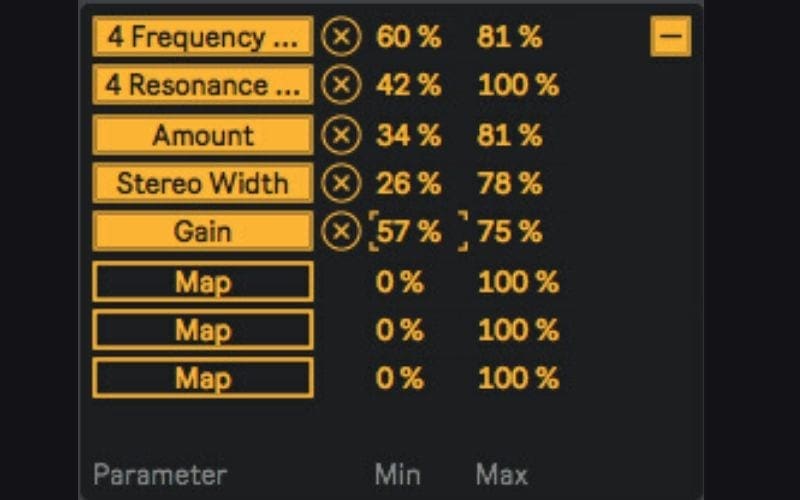

- #Mulab front panel knob lfo meanings pro#
- #Mulab front panel knob lfo meanings Pc#
- #Mulab front panel knob lfo meanings series#
#Mulab front panel knob lfo meanings pro#

Synthesizer Build part-14: AD/AR Envelope Generator.Remember these 0 to +10V signals are inverted, so the waveshape potmeter works the other way around for these waves. You can take a look at the 8 step sequencer V2.0 schematic which also has an offset feature of my own design and it's the same design as used here. I'm sorry there's no schematic for these additions, I did it from memory, but this feature is included in the stripboard layout. There was room on the circuitboard to put a little TL082 on and make the two inverting buffers with DC offset potmeters.

I even managed to add a little extra of my own design: normally this is a bi-polar LFO meaning all the outputs go from -5 to +5 volt but I added a uni-polar feature with two extra outputs for the saw-triangle-ramp wave and the sinewave that go from 0 to +10 volt. It uses a TL084 quad opamp chip and a LM13700 OTA chip. So it can be a bit fiddly to calibrate.Ī very feature rich design and a design with very few components so not much can go wrong. noun a distinct portion, section, or division of a wall, wainscot, ceiling, door, shutter, fence, etc., especially of any surface sunk below or raised above the general level or enclosed by a frame or border. It also influences the shape of the sinewave. The pulse width of the squarewave is set with the same potmeter that controls the shape of the other waves. With one speaker, two lights, and two buttons, that makes five functions, and five annoying little wires to hook up.Squarewave pulsewidth (or dutycycle) goes from 1% to 99%. That means that instead of being able to connect all 12 pins with a single cable and jumper block, separate wires and connectors must be used for each function. Unlike internal USB, Firewire, or IDE connectors, though, front panel pins aren’t arranged according to a common standard. There are 12 pins in total-just three more than the number of pins used for internal USB and Firewire connectors, but a whopping 27 pins less than a standard IDE connector.
#Mulab front panel knob lfo meanings series#
Despite this cornucopia of regulated connectors, motherboards are still one standard short.Įvery motherboard has a series of front panel connector pins to power a chassis’ internal speaker, power and hard drive activity lights, and power and reset buttons. Not only are the boards themselves governed by form factor specs, they’re also populated with all sorts of ports, slots, and connectors that subscribe to one standard or another. Motherboards are probably the best place to see standards in action. That interoperability is what enables system builders to assemble systems with a seemingly limitless number of configurations, and it’s what fuels an enthusiast’s ability to roll their own rig.
#Mulab front panel knob lfo meanings Pc#
In addition to allowing us to confuse the masses with acronyms like AGP, ATX, IDE, and PCI, those standards have facilitated broad interoperability between various PC components. The PC has thrived largely thanks to standards.


 0 kommentar(er)
0 kommentar(er)
